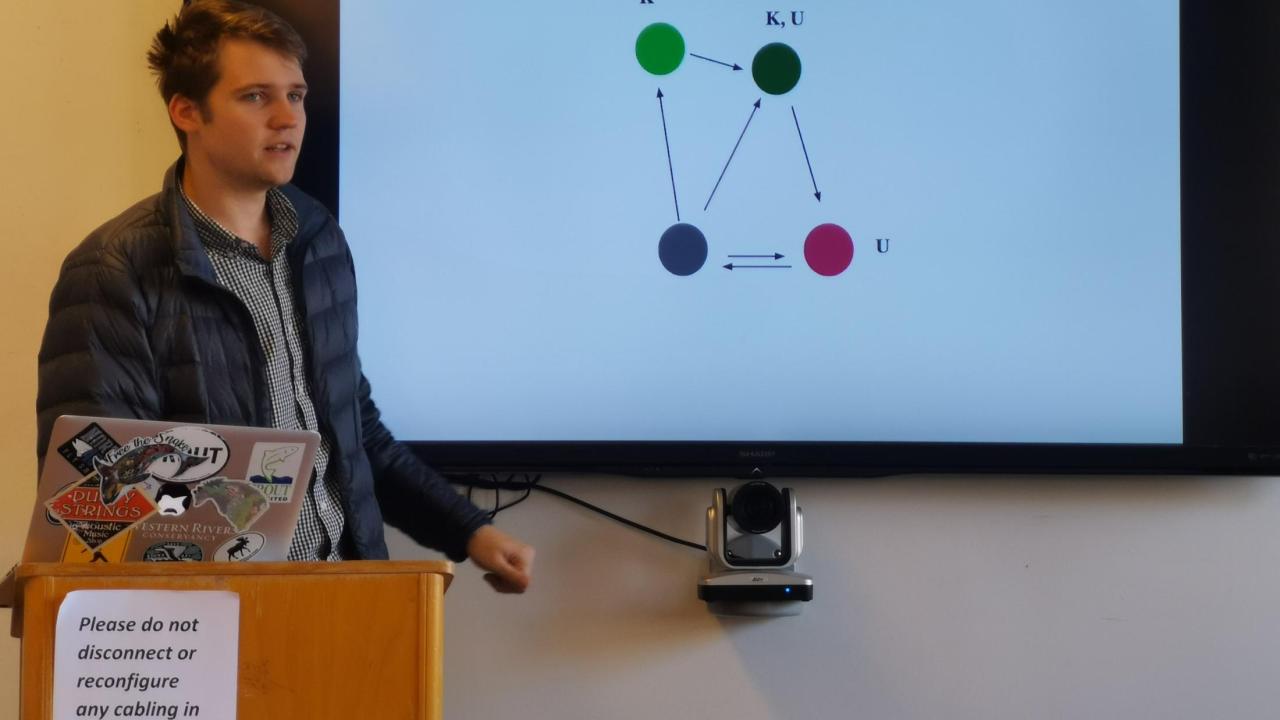
Lab Seminar - Modeling cost effective restoration strategies for kelp forest in northern California
Jack Buckner presented his research on kelp forest restoration in California. Kelp forests large stands of macro-algae that grow in near shore temperate ecosystems around the world. The coast of California is no exception with perennial giant kelp forest in the southern half of the state and annual bull kelp forests north of Monterey. Not only are these kelp communities important in ecological terms, but they also provide key ecosystem services. In northern California kelp forests historically supported a recreational abalone fishery valued at 44 million annually and a commercial red searching fishery valued at 4 million dollars a year. In 2014 and 2015 a large marine heatwave formed off of the west coast of the united states leading to the loss of over 90% of the kelp forests on the north coast and associated closures of the abalone and red urchin fisheries. In response to these closures a coalition of nonprofits, state and academic institutions called KELPRR formed with the goal of restoring kelp forests in key areas. The success of these restoration projects will likely be contingent on the ecological dynamics of the system and associated uncertainties. In the talk, Jack discusses a cost effectiveness modeling framework that he has been developing to understand how spatial complexity and uncertainty in the ecological dynamics structure tradeoffs between different management options.